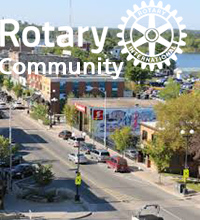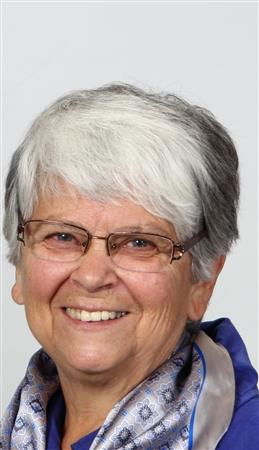Following up on editor John Borst’s suggestion to summarize our club visits over the past 5 months in the form of a “District Culture”, here goes!
Clubs in D5550 have three favourite international projects – Polio eradication, ShelterBox and Ripple Effect.
 Since supporting the eradication of Polio has been going on since 1985, it has almost become a habit. Even though we are “so close” to succeeding in this effort, it is still necessary
Since supporting the eradication of Polio has been going on since 1985, it has almost become a habit. Even though we are “so close” to succeeding in this effort, it is still necessary- to actively search for any lurking wild poliovirus, both in affected areas as well as in those areas already identified as being polio-free,
- to immunize newborns and
- to locate and immunize children in families living in isolated, incredibly hard-to-reach locations in parts of the world.
Supporting the work of ShelterBox, which provides emergency shelters for families affected by disasters around the globe is a project that tugs at the heartstrings of many Rotarians in our District.
However, the international project closest to most Rotarians in the district is that of “The Ripple Effect”, a literacy and school-building program in Guatemala started in 1999 by Rotarians in the Rotary Club of Winnipeg West. The program is currently led by Gord and Deb LeMaistre of the Rotary Club of Kenora. More than 80 schools have been built or upgraded and provided with extra classrooms, toilet blocks, kitchens, playgrounds, computers/servers., school supplies, etc. In addition, student and teacher scholarships have been provided, benefitting more than 20,000 students and teachers in the last four years.
Nevertheless, it’s providing some of the needs that Rotarians see in their own communities that bring the most immediate fulfilment to one’s spirit, and that is shown by the significantly higher percentage of club  funds that support local projects. Among those projects are many programs focusing on youths in the community. However, because Rotarians are typically uncomfortable about advertising what good they do, the general public in the District is largely uninformed of what Rotary is and what Rotary does. There are some notable exceptions. In Kenora for example, Rotary partnerships with businesses and organizations in the community have progressed to the point that businesses have come forward with donations or ideas for a great fundraiser without having been approached. Communicating with and including the community in meeting Rotary goals can produce great results!
funds that support local projects. Among those projects are many programs focusing on youths in the community. However, because Rotarians are typically uncomfortable about advertising what good they do, the general public in the District is largely uninformed of what Rotary is and what Rotary does. There are some notable exceptions. In Kenora for example, Rotary partnerships with businesses and organizations in the community have progressed to the point that businesses have come forward with donations or ideas for a great fundraiser without having been approached. Communicating with and including the community in meeting Rotary goals can produce great results!
 funds that support local projects. Among those projects are many programs focusing on youths in the community. However, because Rotarians are typically uncomfortable about advertising what good they do, the general public in the District is largely uninformed of what Rotary is and what Rotary does. There are some notable exceptions. In Kenora for example, Rotary partnerships with businesses and organizations in the community have progressed to the point that businesses have come forward with donations or ideas for a great fundraiser without having been approached. Communicating with and including the community in meeting Rotary goals can produce great results!
funds that support local projects. Among those projects are many programs focusing on youths in the community. However, because Rotarians are typically uncomfortable about advertising what good they do, the general public in the District is largely uninformed of what Rotary is and what Rotary does. There are some notable exceptions. In Kenora for example, Rotary partnerships with businesses and organizations in the community have progressed to the point that businesses have come forward with donations or ideas for a great fundraiser without having been approached. Communicating with and including the community in meeting Rotary goals can produce great results! Another example of community involvement is the Rotary Grow Project of the Rotary Club of Hudson Bay. The Club rents a quarter section of land from the owners, who do all the planning and work during the spring and summer (but the club pays the bills). The harvest, however, is done by local volunteers – about 10 combines harvest the crop in about an hour, after which the volunteers, visitors and students from a school class (Grade 3 this year) are served dinner in the field by members of the Rotary Club. All of the grain from the Rotary Grow Project is sold and half of the net proceeds are donated to the Canadian Foodgrains Bank. In the late fall, the Rotary Club has a Farmers Appreciation Supper for all participants and their spouses.
Membership in the District is quite diverse in gender, in ages (although seniors still outnumber younger members), in countries of origin and in skin colour (although white is dominant). Notably, though, D5550 Rotary club membership rarely includes representatives of our native peoples. A number of clubs are taking advantage of the flexibility in membership and meetings (introduced in 2016 by Rotary International’s Council on Legislation) with the aim of increasing their membership and attracting young professionals to Rotary. The culture of those clubs is “a work in progress” – but then - aren’t we all?
Enjoy December and ALL it has to offer!

